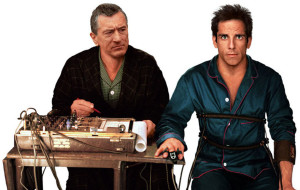Become a Human Lie Detector
by Marty Nemko
Your boss tells you, “You’re doing a good job.” Do you believe him? You are interviewing a candidate for a job. She says, “I left my previous job, because I was tired of the long commute.” Your romantic partner tells you, “I am not having an affair.” True?
It’s easier than you think to become a human lie detector.
Look for Suspicious Behaviors
By themselves, each of these behaviors can just be signs of stress, or even a person’s natural mannerisms. One can occur by chance, but when two or more of these behaviors suddenly appear at a moment when lying could be expedient, you should be skeptical. For example, when you ask a salesman how reliable that used car is, it suggests he’s lying.
Here’s the top eight list of suspicious behaviors:
- A change in the voice’s pitch.
- A change in the rate of speech.
- A sudden increase in the number of “ums” and “ahs.”
- A change in eye contact. Normally, one makes eye contact one-quarter to one-half of the time. If suddenly, at the convenient moment to lie, he’s staring at you or looking away, beware.
- Turning his body away from you, even if just slightly.
- Suddenly being able to see the white on the top and bottom of a person’s eyes, not just the sides.
- A hand reaching, even if momentarily, to cover part of the face, especially the mouth.
- Nervous movement of feet or legs.
Of course, in order to notice a change, you need a baseline. So you must first watch the person when talking about innocuous issues.
A Mixed Signal
Also look for mixed signals. When someone’s telling the truth, her words, her face and her body language are all congruent. For example, if a person is honestly saying that she likes you, her face is usually relaxed, offering a gentle smile and warm eyes. Her body is calm and open. But when she’s lying, something is usually inconsistent. In the most obvious case, she may be saying she likes you, but she’s not smiling. She may even have a clenched fist. Better liars can muster a smile, but it doesn’t look natural. Even better liars can put on a convincing smile, but their eyes aren’t smiling. Still better liars can control their entire face, but their bodies seem closed or cold. Look for mismatches between words and body language.
When you’ve gotten a signal—a change in body language or a mixed signal that the person may be lying—ask for more information about the same topic. Are those same lying signs apparent? That can confirm your suspicion.
Of course, there’s no foolproof way to detect lying. Some people are terrific at covering themselves up, especially if they are naturally emotionally flat or have practiced their lying skills over many years—certain political leaders come to mind. But if you look for behavior changes and mixed signals at lying-expedient moments, you will improve your BS detector.

Leave a Reply